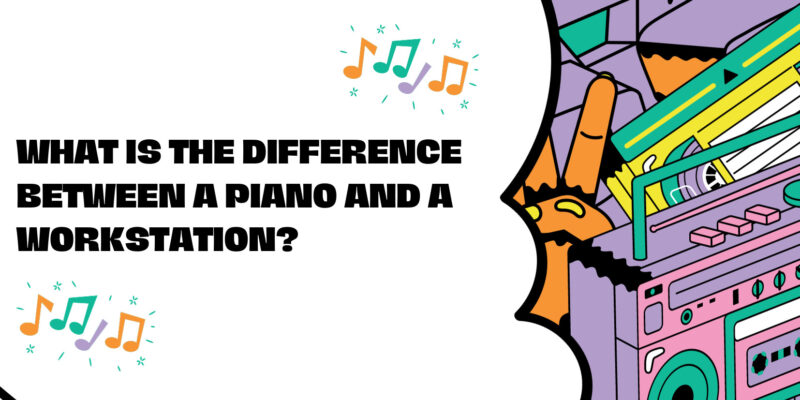Pianos and workstations are both musical instruments that play a significant role in the world of music, but they serve different purposes and offer distinct features. In this article, we will explore the fundamental differences between a piano and a workstation to help you understand their unique characteristics and applications.
Piano:
- Sound Generation:
- Acoustic Pianos: Traditional acoustic pianos, such as grand and upright pianos, produce sound by striking strings with hammers. The sound resonates through the wooden body, creating a rich, organic tone.
- Digital Pianos: Digital pianos replicate the sound of acoustic pianos through sampled recordings of real piano notes. They use speakers or headphones to produce sound.
- Sound Variety:
- Acoustic pianos produce a single sound – that of a piano – with variations in tone and timbre depending on factors like piano size and manufacturer.
- Digital pianos may offer a limited selection of piano sounds but are primarily designed to emulate acoustic pianos faithfully.
- Polyphony:
- Traditional acoustic pianos have unlimited polyphony since the sound is generated mechanically.
- Digital pianos typically offer a set polyphony, which refers to the number of simultaneous notes a piano can produce without cutting off previously played ones.
- Touch Sensitivity:
- Both acoustic and digital pianos feature keys with varying degrees of touch sensitivity. Harder key presses yield louder sounds, while softer touches produce quieter notes.
- Portability:
- Traditional acoustic pianos are generally large and heavy, making them less portable.
- Digital pianos come in various sizes, some of which are portable and suitable for stage or studio use.
Workstation:
- Sound Generation:
- Workstations use advanced sound engines capable of generating a wide range of sounds, including realistic instrument emulations, synthesizer tones, electronic textures, and more.
- Sound Variety:
- Workstations provide an extensive library of sounds, encompassing various musical instruments, sound effects, and synthesized textures. They offer versatility for music production across genres.
- Polyphony:
- Workstations often have high polyphony counts, accommodating complex arrangements and layering of multiple sounds simultaneously.
- Sequencing and Recording:
- Workstations feature advanced sequencing and recording capabilities, allowing users to compose, arrange, and record entire songs directly on the instrument. Some workstations even include built-in digital audio workstations (DAWs).
- Sound Editing:
- Workstations offer in-depth sound editing and manipulation tools, enabling users to create custom sounds and textures through synthesis and sampling.
- Performance Features:
- Workstations are designed for live performance, with features like split and layer functions, real-time controls, and performance modes to facilitate on-stage creativity.
- Portability:
- Workstations vary in size and weight, with some being highly portable and suitable for live gigs, while others are more studio-oriented and less portable.
Conclusion
In summary, the key difference between a piano and a workstation lies in their sound generation, sound variety, polyphony, and intended use. Pianos, whether acoustic or digital, focus primarily on emulating the sound of pianos and provide limited sound variety, making them ideal for piano-focused performances. Workstations, on the other hand, offer a vast range of sounds, advanced recording and sequencing capabilities, and extensive sound editing, making them versatile tools for music production, composition, and live performance across various musical genres. The choice between a piano and a workstation depends on your musical goals and requirements.


